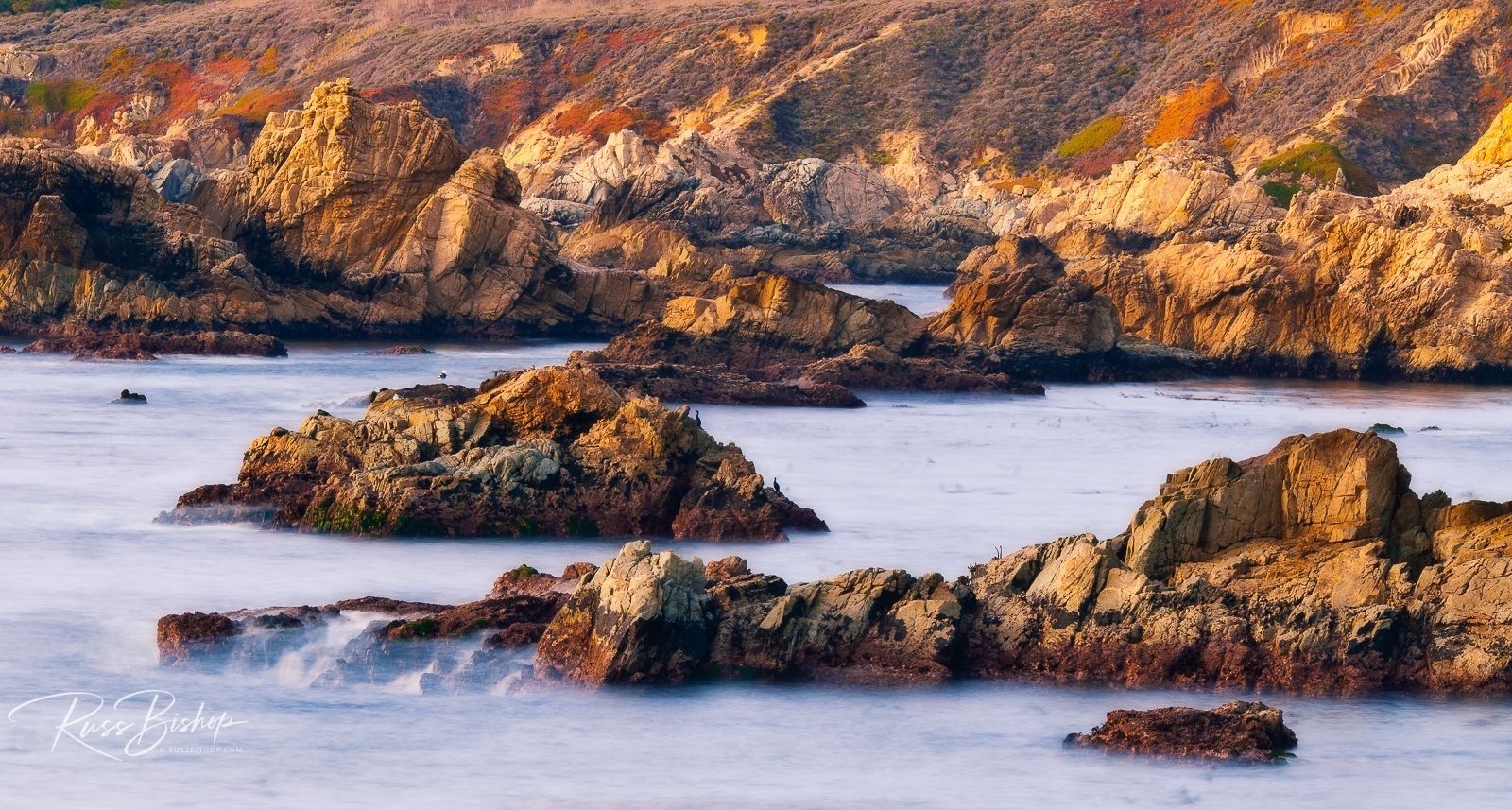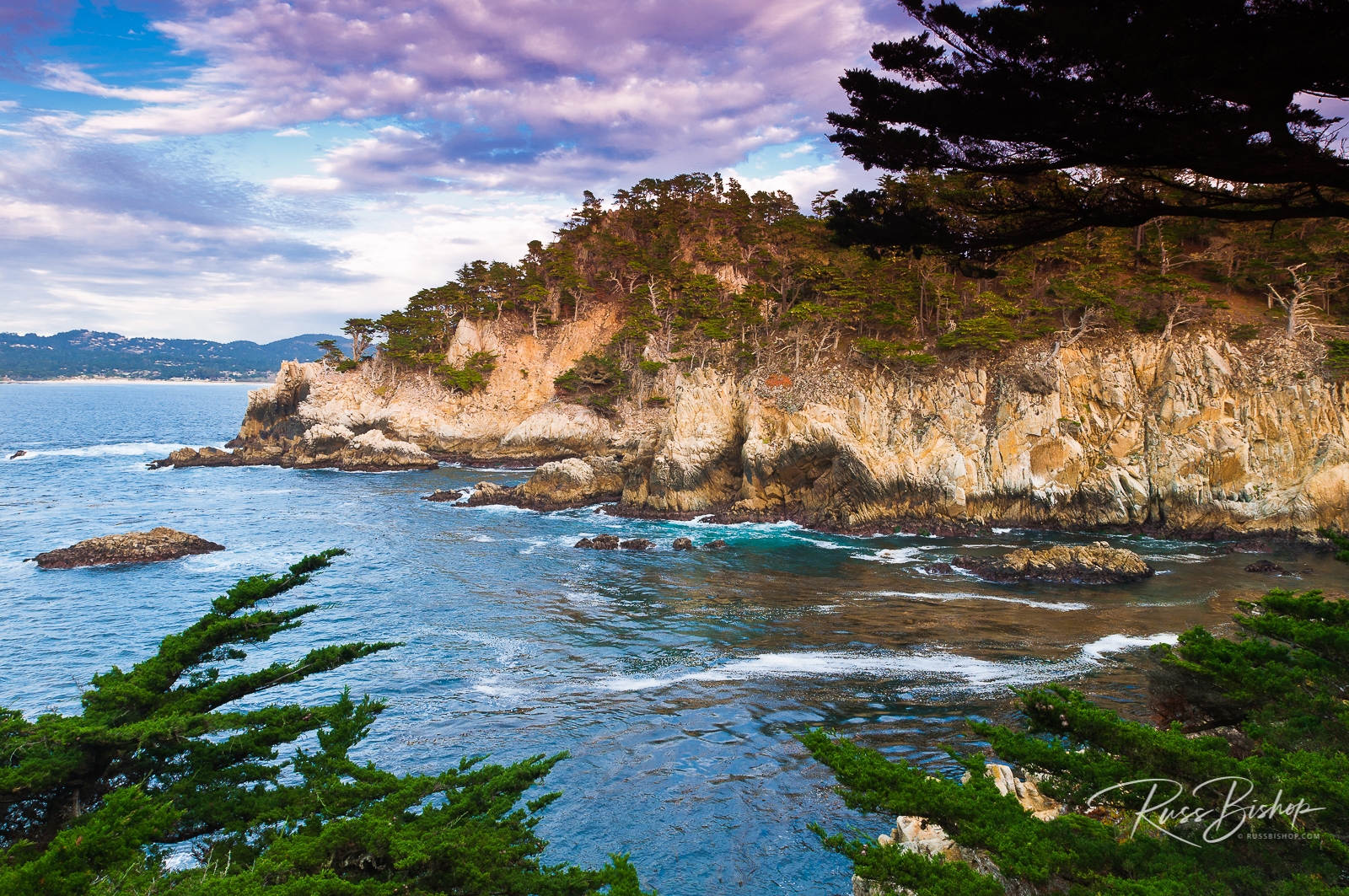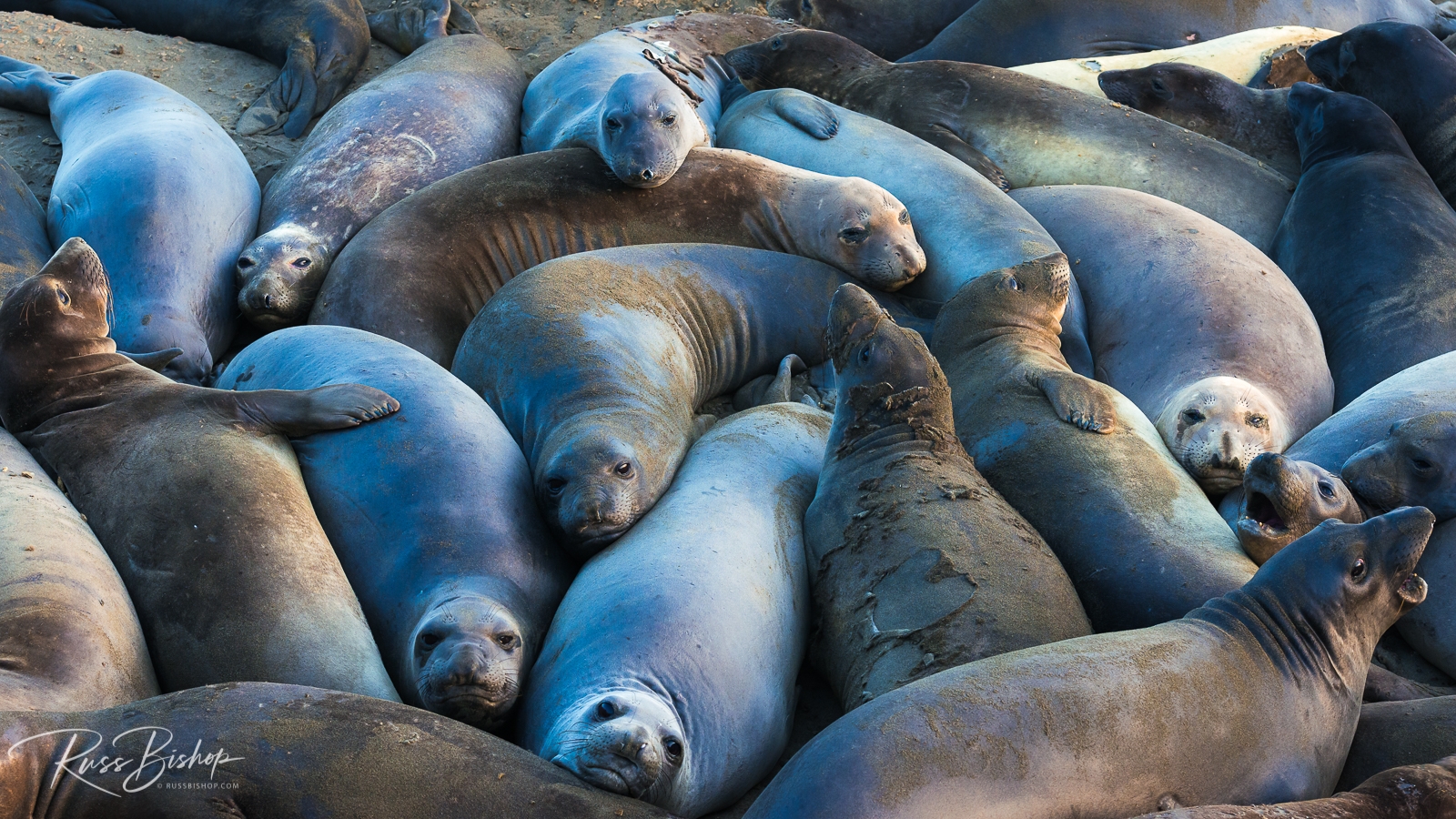
The Big Sur coast is one of those truly special locations that never fails to impress. The rocky shoreline and misty mountains are instantly recognizable the world over, yet her mood is constantly changing throughout the seasons providing a fresh perspective with each new visit.
From the early morning fog to the golden sunsets, this meeting of land and sea is in a constant state of flux. And as you make your way along that magical ribbon known as Highway 1, each turn reveals a slightly different scene that somehow seems more dramatic than the last.
For photographers, this perpetual change is ideal and the challenge of making fresh images (common in many other popular landmarks) is all but removed. The Big Sur coast is also part of the Monterey Bay National Marine Sanctuary, and its rich sea life, including Elephant Seals, otters. and migrating gray whales, provides yet another opportunity for great imagery and unparalleled wildlife viewing .
©Russ Bishop/All Rights Reserved


